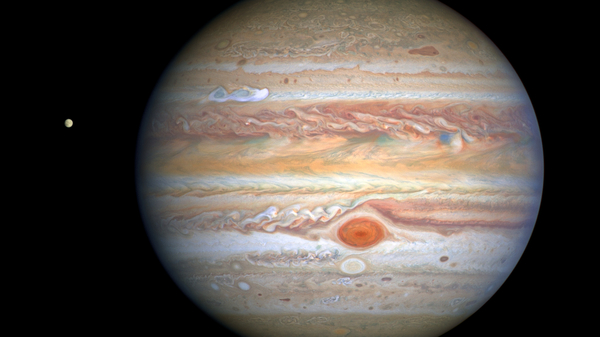Why Mars Has More Leap Years than Earth
Earthlings are in for another Leap Day next week. That got us wondering: Do Martians have Leap Days, too?

An awkward ratio between rotational and orbital periods means Mars has more leap years than common years.
NASA/JPL/USGS
A Lucky Coincidence
It’s a familiar ritual: Every four years—with rare exceptions—we add an extra day to our calendars.
Leap Day, on February 29, is how we align our calendar with the seasons. A year on Earth doesn’t last a round number of Earth days. It takes our planet 365.24219 days to complete a full lap around the Sun (from one March equinox to the next). That means our calendar is off by about a quarter of a day each year (0.24219 days, to be precise).
Every four years, Earth is pretty much exactly one day behind schedule. That’s when we add a Leap Day to allow it to catch up—as will happen next week, on February 29, 2024.
So far, so good. But have you ever stopped to think how lucky we are to live on a planet that allows for such a straightforward set of leap year rules? What if Earth moved a bit faster or slower along its orbit or if it rotated at a different speed? What would our calendar look like then?
Leap Sol
Well, let’s have a look at Mars. After all, this is a very Earth-like planet in our solar system and a likely candidate, at some point, for extraterrestrial colonization.
The red planet orbits the Sun at a greater distance than Earth, so a Mars year takes much longer: 686.973 Earth days. At the same time, it spins at a marginally slower pace, so a Martian day, a sol, takes 24.6597 hours.
Most days on Earth aren’t exactly 24 hours either
This works out at 668.59 sols per year on Mars. So, in a Mars calendar system, a common year would have 668 sols, and a leap year would have 669 sols.
The additional sol would be a Leap Sol.
More Leap Years Than Common Years
The interesting bit about the number of sols per year, 668.59, is what comes after the decimal point: 59. It means that a Martian calendar without leap days would be off by 59 days every 100 years, or just under 6 days every 10 years.
In other words, six Leap Solswould need to be added per decade, so Martians would have more leap years than common years.
To make up for the fact that the discrepancy is just under 6 solsper decade, a Leap Sol would have to be omitted at regular, long-term intervals—not dissimilar from our arrangement here on Earth.

Rather than classic calendars, Mars missions utilize their own simplified time-reckoning system. This shot was taken by NASA’s Curiosity rover in November 2012.
NASA/JPL-Caltech/Malin Space Science Systems
Martian Calendars Exist...
So much for the mathematical background. The actual implementation of a Martian calendar system could take many different forms, and how exactly to distribute leap years on Mars is up for discussion. (The same is true for Earth, by the way: There is no mathematical reason why Earthlings add their Leap Day at the end of February. Theoretically, we could just as well add a day on, say, July 32.)
Through the years, Mars enthusiasts have made several proposals for calendar systems reflecting the planet’s year and day lengths as closely as possible—one of the better-known systems being the Darian Calendar.
...But None Are in Common Use
Meanwhile, space organizations use their own simplified calendar systems for their Mars missions.
Keeping the calendar in line with the Martian seasons is not a major concern there, so, for simplicity’s sake, their time reckoning generally avoids reconciling the Martian year and day lengths using Leap Sols. Rather, it is based on either one or the other:
- Some missions simply count the number of sols elapsed since the start of the mission (day-based).
- Others track the planet’s progression along its orbit around the Sun (year-based).
Jupiter Breaks the Calendar
If this got you worried about the calendrical complications facing future Mars settlers, you might find some consolation in the fact that no one will ever settle on Jupiter.

Jupiter has different rotation periods per latitude, so devising a calendar system for the gas giant would pose a whole new set of challenges compared to terrestrial planets like Mars.
©NASA, ESA, STScI, A. Simon (Goddard Space Flight Center), M.H. Wong (University of California, Berkeley), and the OPAL team
Devising a timekeeping system for the gas giant poses a whole set of additional challenges: It doesn’t have a solid surface, and the gases in its atmosphere spin at different speeds depending on the latitude. The length of a day varies from around 9 hours 50 minutes at the equator to 9 hours 56 minutes elsewhere.
So, in effect, each latitude would have to have its own calendar with a differing set of leap year rules.